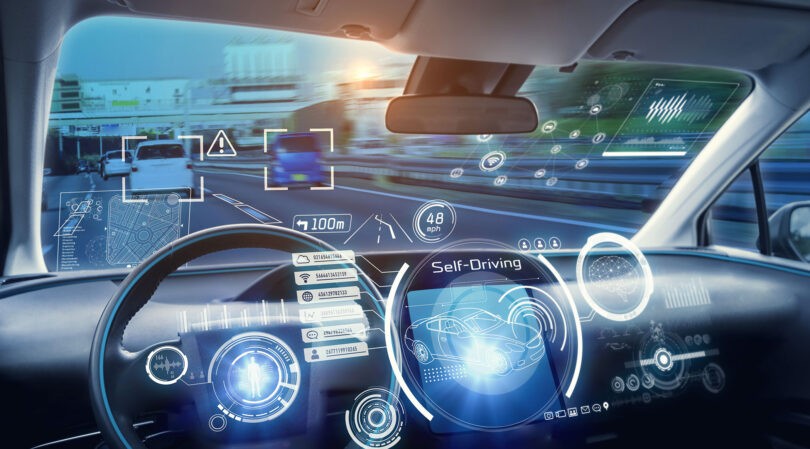Self-driving cars are constantly evolving, and with them, the promise of safer roads. But how safe are they really, and what technologies are making the biggest difference in accident prevention? Recent research from the University of Georgia highlights a groundbreaking advancement in artificial intelligence (AI) that could significantly enhance the safety of autonomous vehicles and, potentially, all cars in the future.
This article delves into this new AI model and explores how it’s designed to predict traffic movements more accurately, ultimately reducing the likelihood of accidents. We’ll examine the challenges of building truly safe self-driving cars and how this innovative research is tackling those hurdles, bringing us closer to a future with fewer accidents.
The Challenge of Prediction in Autonomous Driving
For self-driving cars to navigate complex road scenarios safely, they must be adept at predicting the behavior of other vehicles. This predictive capability is crucial for making informed decisions, such as when to change lanes, brake, or accelerate. However, predicting human driving behavior is inherently challenging. Drivers are often unpredictable, and even minor discrepancies between predicted and actual movements of surrounding cars can create dangerous situations.
Qianwen Li, assistant professor at UGA’s College of Engineering and lead author of the study, points out this critical issue: “There are always differences between your prediction and the reality. The planned trajectory of the self-driving car may turn out to collide with the actual trajectory of another vehicle.” Traditional approaches often separate traffic prediction from motion planning, which can exacerbate these discrepancies and increase the risk of collisions.
A New AI Model for Enhanced Safety: Integrating Prediction and Planning
The UGA research team addressed this challenge by developing a novel AI model that integrates traffic prediction and motion planning into a single, cohesive system. This integrated approach allows the self-driving car to not only predict what other vehicles might do but also to simultaneously plan its own movements in a way that accounts for potential prediction errors. By consolidating these two critical steps, the new AI model aims to create a safer operational environment for autonomous vehicles.
The study, published in Transportation Research Part E, demonstrates the effectiveness of this integrated approach using real-world data from the I-75 freeway in Florida. Experiments showed that the new model improved safety performance compared to previous methods by proactively addressing the inherent uncertainties in traffic prediction.
Beyond Prediction: Balancing Safety and Mobility
While accurate prediction is paramount, designing safe self-driving cars involves a delicate balance between safety and mobility. An overly cautious autonomous vehicle, programmed for maximum safety at all costs, might maintain excessively large following distances, hindering traffic flow and overall mobility. Conversely, prioritizing mobility too heavily could lead to more aggressive driving patterns and increased accident risk.
Li emphasizes this trade-off: “We’re still working on how we train the model in a way that can balance the safety and mobility performance.” The ideal AI system should be able to navigate roads safely and efficiently, optimizing both accident prevention and smooth traffic flow. This involves sophisticated algorithms that can adapt to various driving conditions and make nuanced decisions in real-time.
The Future of AI in Car Safety: Learning from Large Language Models
Looking ahead, researchers are exploring the potential of even more advanced AI models, including large language models similar to ChatGPT, for self-driving car operations. These models could be trained on vast datasets of traffic scenarios to learn high-level decision-making, such as how to react to complex and unexpected situations on the road.
However, as Li notes, large language models have limitations when it comes to the precise control required for vehicle movement: “How do we make a perfect lane change that is safe and also efficient? How do we come to a smooth stop for pedestrians without inducing any riding discomfort? Basically, how do we design the specific trajectories? That part we do not ask ChatGPT or large language models to do because they do not have the capability to do so. Traditional trajectory optimization models can do a much better job based on our experiments so far.” Therefore, the most effective approach likely involves a hybrid system, leveraging the high-level reasoning capabilities of large language models in conjunction with the precise trajectory optimization of traditional models.
Conclusion: Towards Safer Roads with Advanced AI
The development of this new AI model represents a significant step forward in enhancing the safety of self-driving cars and reducing accidents. By integrating prediction and motion planning and accounting for prediction errors, this research paves the way for more reliable and safer autonomous vehicles. As AI technology continues to advance, and researchers continue to refine these models, we can anticipate a future where cars are not only more convenient but also significantly safer, leading to fewer accidents and ultimately saving lives. The ongoing research into balancing safety and mobility, and exploring the potential of large language models, promises even greater advancements in the years to come, bringing us closer to the vision of accident-free roads.
